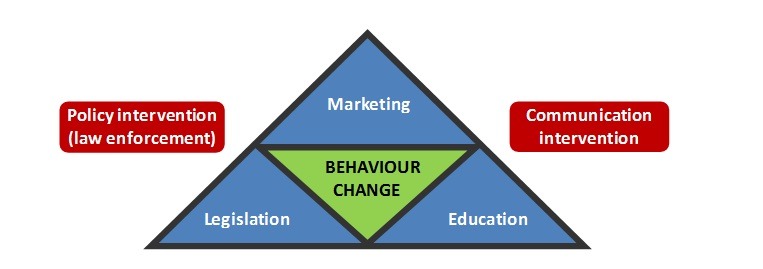Watch the presentation about Demand Reduction
We are hearing more about demand reduction these days. Demand reduction applies in situations where we wish to undo damaging behavior, or, influencing people not to engage in such behavior in the first place. Encouraging people not to consume wildlife products is a good example of demand reduction. But how should we measure it?
Reducing demand for wildlife products was a key topic at a recent meeting held in Hong Kong. All the major wildlife conservation organizations were present and speakers from within the industry, as well as the private sector, shared insights into how to best combat these challenges. Ivory, shark fin and rhino horn are some of the products that research and literature tend to focus on. However, there are many other species on the brink of extinction due to irresponsible consumption. China, the US, Vietnam, Philippines and Thailand have the highest demand for wildlife products. Various campaigns have been launched to inform the general public and policy makers in these, and other, countries of the negative impacts of wildlife consumption.
The challenge with measuring demand reduction is twofold. First, it is difficult to prove we prevented someone from consuming these products. Second, since many wildlife products are traded illegally in many countries, gaining access to reliable sales data is rather difficult. Hence, the most viable alternative option is to measure demand reduction at the consumer level, but how?
The goal is to reduce demand, so the focus cannot be on behavior alone. The decision not to buy or consume wildlife products starts in the mind. So if we want to deter consumers from consuming wildlife products we need to influence their awareness, attitude and behavior. The actual process of change can be understood as a journey where people move from a position where they may be completely unaware of the problem, becoming aware, start thinking about it and forming a belief, changing their attitude, developing an intention not to consume such products, and finally, resisting the temptation to consume them. By knowing where people are along this journey, it is possible to measure demand reduction in response to different interventions.
Being able to measure demand reduction has many advantages. Not only is it a good proxy measure for looking at the impact a campaign or initiative is having, but also, it helps tell us where different segments in the target audience are positioned along the journey described above.
When consumers are at the bottom of the journey, programs need to take an educational approach to build knowledge and understanding about the problem. For audiences in the middle, changing attitudes becomes more important. This can often be a challenging barrier to overcome. Other barriers such as access to viable substitutes can also be relevant. Traditional medicines made from wildlife are a good example where the argument to “stop usage” would require an alternative.
Another aspect to consider is law enforcement. It is important to understand whether law enforcement is visible and the extent to which consumers perceive it to be a deterrent. For a social marketing campaign, behavior change communication and law enforcement need to work hand in hand. Behavior change communication can be very effective at bringing consumers up to a point where the propensity to change is very high. But, it is law enforcement that will help ensure it actually happens. Ultimately, it is effective law enforcement that will ensure it actually happens as only law enforcement has the legal authority to serve as an obliging reminder and deterrent to reinforce behavior change.
For more information about the behavior change journey please visit this link: https://rapid-asia.com/programme-evaluations/kap-score/
Connect With Rapid Asia l Facebook l LinkedIn l Twitter l
About the Author: Daniel Lindgren is the Founder of Rapid Asia Co., Ltd., a management consultancy firm based in Bangkok that specializes in evaluations for programs, projects, social marketing campaigns and other social development initiatives. Learn more about our work on: www.rapid-asia.com.



